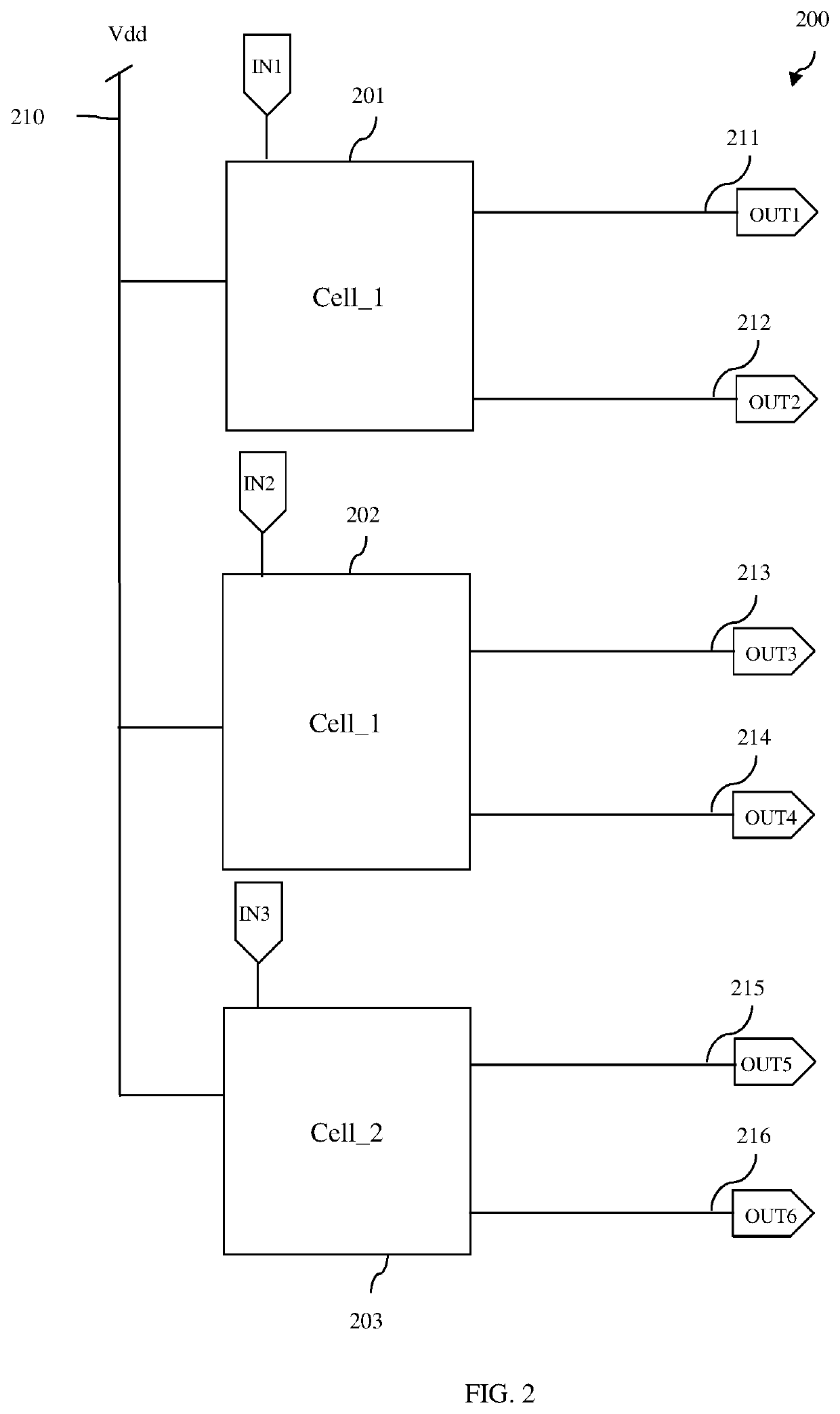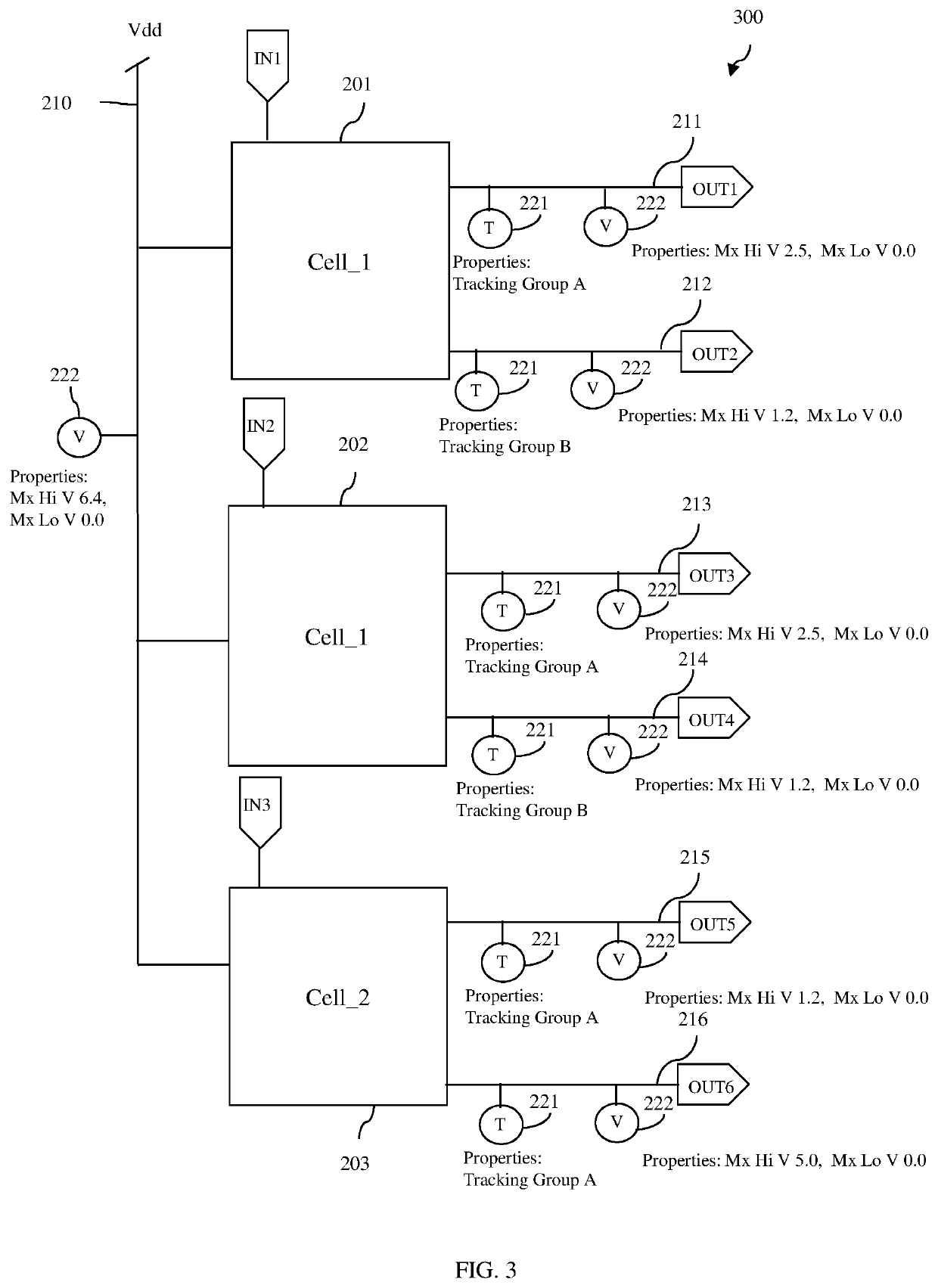Integrated circuit (IC) design systems and methods using single-pin imaginary devices
a technology of integrated circuits and imaginary devices, applied in cad techniques, special data processing applications, instruments, etc., can solve problems such as unnecessary area for performance trade-offs, unnecessary area consumption, and unnecessarily limit size scaling
- Summary
- Abstract
- Description
- Claims
- Application Information
AI Technical Summary
Benefits of technology
Problems solved by technology
Method used
Image
Examples
Embodiment Construction
[0021]As mentioned above, oftentimes the design rules of a specific technology node will be overly pessimistic (i.e., enforced based the assumption of worst-case conditions) and this pessimism can result in unnecessary area for performance trade-offs.
[0022]In view of the foregoing, disclosed herein are embodiments of computer-aided integrated circuit (IC) design systems and methods. In the embodiments, some circuit components have common features that can be noted within the IC schematic diagram using single-pin imaginary devices so that these common features can be considered during the design flow to, for example, minimize area consumption and improve IC reliability.
[0023]For purposes of this disclosure, an “imaginary device” in a schematic diagram is device symbol that is not representative of an actual device within the IC (i.e., a device that is to be manufactured), but instead is inserted into the schematic diagram and employed in order to provide additional, circuit-specific ...
PUM
 Login to View More
Login to View More Abstract
Description
Claims
Application Information
 Login to View More
Login to View More - R&D
- Intellectual Property
- Life Sciences
- Materials
- Tech Scout
- Unparalleled Data Quality
- Higher Quality Content
- 60% Fewer Hallucinations
Browse by: Latest US Patents, China's latest patents, Technical Efficacy Thesaurus, Application Domain, Technology Topic, Popular Technical Reports.
© 2025 PatSnap. All rights reserved.Legal|Privacy policy|Modern Slavery Act Transparency Statement|Sitemap|About US| Contact US: help@patsnap.com



